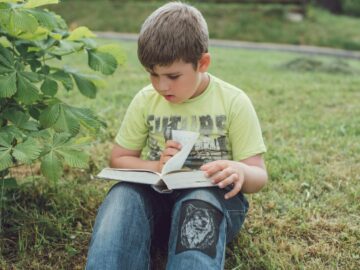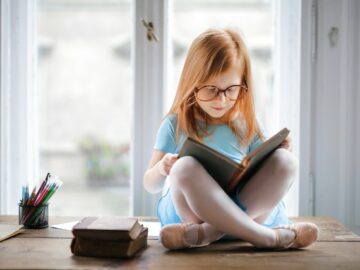Patterns are mostly seen everywhere, and making use of these is essential for every preschooler. Starting them to learn patterns will significantly help their mathematical skills in the future. They can observe and develop their cognitive skills as they go along.
Patterns are fun to look out for, and these will make them form connections and further predictions. This might take time for them to develop their pattern skills, but securing them with fun, engaging activities will make them eager to learn!
To start, here is a quick introduction to the stages of development in pattern skills:
Developmental Stages for Pattern Skills
Stage 1: Let the kids examine the pattern
Stage 2: Let the kids describe the pattern
Stage 3: Let the kids imitate the pattern
Stage 4: Let the kids broaden the pattern
Stage 5: Let the kids create their pattern
You are now equipped with information regarding the stages they have to do. Here is the list of awesome activities to try for your preschooler!
Pattern Activities for Preschoolers
Get ready for these simple yet creative pattern activities just for your preschoolers. These will serve as stepping stones for your child’s development, especially for learning math concepts.
The Block Patterns
These classic blocks have different colors to choose from and will make a perfect pattern activity for your kid. Start the pattern with a blue block, then a red one, and repeat. Let them describe the pattern they had observed.
Spot the Patterns
The fun and adventure will start once they observe the patterns around them. Always point out and explain to them the patterns you have observed, it may be on the fur of your family pet, on the design of their bike, and the flowers from the neighbor’s lawn. You can also ask them to spot patterns on their own!
Outdoor Patterns
Gather leaves, fallen flowers, branches, and rocks outdoors. Make a pattern by having a leaf first, then a rock, then a flower, and so on. Let them imitate the pattern after!
Singing Songs
Another good way for them to remember the patterns is through singing songs and hearing rhymes. They can be aware of different syllables and can repeat the pattern found in them. Kids will love to hear and sing songs whenever they like, and they won’t forget the patterns they have observed!
Play with Beads
Beads have different shapes and sizes. They will love to make their necklace by letting them have their patterns. Kids will not only learn pattern skills, but they will also be aware of how different the shapes and sizes of the beads have.
Bake Fun
Kids can be extra creative once they bake cookies, while they can learn how to put a pattern of decorations on them. They will also love how to mix and stir the ingredients and make estimations out of it! They will be extra productive and learn different things with this cool activity.
The Clap, Stomp, and Nod pattern
Let your kids move their hands, feet, and heads as they follow the pattern you made. You can simply experiment with the three patterns and make them memorize them. You can also make it a little challenging after!
Storytime
There are kid-friendly books that are full of patterns and repetitional scenarios to identify. This will serve as good practice for their prediction skills and make it easier to understand the flow of the story. There is so much learning with the power of storytelling!
Puzzle Games
Another significant development for their visual skills is these puzzle games, where they can be familiar with words and numbers. This will start their growth in reading and analyzing on their own. Many puzzle games have patterns, and it will be fun to let them point out all of them while learning.
Strategies to Consider When Teaching Patterns to Preschoolers
There are many daily activities that we must consider when helping our children to learn pattern skills. There’s nothing to worry about because they are just found everywhere! You can let your children start the five developmental stages with these four strategies:
Try the concept approach
Kids must have many particular experiences with objects before examining a pattern. They must control the object with their hands, consider its shape, and look for the pattern. A great example above is the blocks, where they play and observe their shape and, later on, connect the patterns they have.
Observe the patterns around them
Let them explore and examine the patterns around them. It may be on the black and white stripes in their pajamas, patterns on the vase, or the color pattern of the fallen flowers. It is also good to go outside, where a lot of patterns are waiting for them.
Let them remember the concepts
Children are already familiar with different concepts such as colors, shapes, and sizes. They can use these as a starting point to learn about patterns. Make sure that you always ask them about these concepts when pointing out a new pattern.
The power of pattern rules
There are specific patterns that require rules. The color pattern found in a tiger’s skin is first a stripe of orange, followed by a stripe of black, and so on. Letting them know that some patterns are repeated with rules is essential.
Frequently Asked Questions on Pattern Activities for Preschoolers
How do you teach patterns to preschoolers?
You can let them sing a rhyming song for a better familiarization of the patterns. You can also read them stories and let them predict what will happen next. They can also play with blocks and give them a pattern afterward. This way, they can identify the pattern and explain it to you.
What are pattern activities?
Pattern activities include simple daily activities like spotting the patterns from an object inside your house or outdoors. There are patterns in your pet’s fur, different designs in your vase, and the flower arrangement from your neighbor also has patterns. You can also let them make a necklace out of beads with their pattern!
What do preschoolers learn from patterns?
They can learn to think of the connections among the patterns. They can also practice how to predict the following pattern or situation that can arise. Preschoolers will also develop their observation skills and sense of numbers. These patterns serve as a basic foundation for complex math skills, perfect for them to learn.
Can 3-year-olds do patterns?
They can now identify and predict some basic repeating patterns. Once they start to be aware of the different concepts of colors, shapes, sizes, and so on, they can slowly start the developing stage for pattern skills. They will start examining the pattern; then they can describe it and eventually imitate it. From there, they can broaden the pattern and create their version.
What are three ideas you can use to teach patterns to preschool children?
First, you can have a routine of pointing out different patterns that you observe in them. You can explain the patterns and encourage them to do it too. The second idea is to have a physical movement game where you give them a stomp, clap, and nod pattern, making it a bit harder as time passes. Third, you can let them play puzzle games to identify patterns for words, numbers, and so on.
What is the primary purpose of patterns?
Patterns allow preschoolers to think of what might happen next or what patterns should be the next. This is an important aspect of learning mathematics because they will start to know different patterns and structures found in numbers and geometry. These patterns will also allow them to explore and make sense of their world.
Why is pattern important in the early years?
Children are curious about everything, and exploring these exciting patterns will let them enjoy learning more. They can predict what will happen, so they will gain strength to face more. These pattern skills will also prepare them for other mathematical concepts they will face as they grow up.
At what age do kids learn patterns?
Preschoolers, kids starting from three-year-old up to five-year-old, can already be introduced to patterns. But some might still find it hard to identify patterns, so this varies between the children. An article shows that from their study, four-year-olds can now imitate and broaden the patterns they have noticed.
Why are pattern blocks important for preschoolers?
Pattern blocks are already introduced even to younger children and further developed by the older ones. Pattern blocks have different shapes and sizes that are good for exploring geometry. These also consist of patterns that can help preschoolers to observe and predict the next set of patterns.
What kind of skill is pattern recognition?
Pattern recognition is a logical skill where children can figure out the pattern and what will happen next. This recognition also enhances their memory and cognitive skills. This will help set the mathematical thinking skill of every preschooler. This will also be important for their reasoning skills as they grow older.
What is pattern recognition for kids?
Pattern recognition is when kids are aware of the patterns and know how to spot them themselves. They can also observe the changes made to the pattern and will think of its following pattern. They also know to connect and think logically about the relationship it has with the world.
How do I teach my 4-year-old patterns?
You can teach them color patterns by using blocks. You can create patterns such as a blue block, followed by a yellow block, and finally, a red block. Let them examine and describe what they see. You can also let them make necklaces with beads and have them make their pattern. This will make them describe the pattern and create their own.
What are the four learning patterns?
There are four learning strategies for patterns, and the first is the concept approach, where they control the object and, later on, consider its concept and look for the pattern. The second is encouraging them to observe the patterns around them. Third is exercising them to look for patterns by remembering the concepts of shapes, colors, sizes, etc. Finally, the last strategy is to let them know that some patterns require rules.







